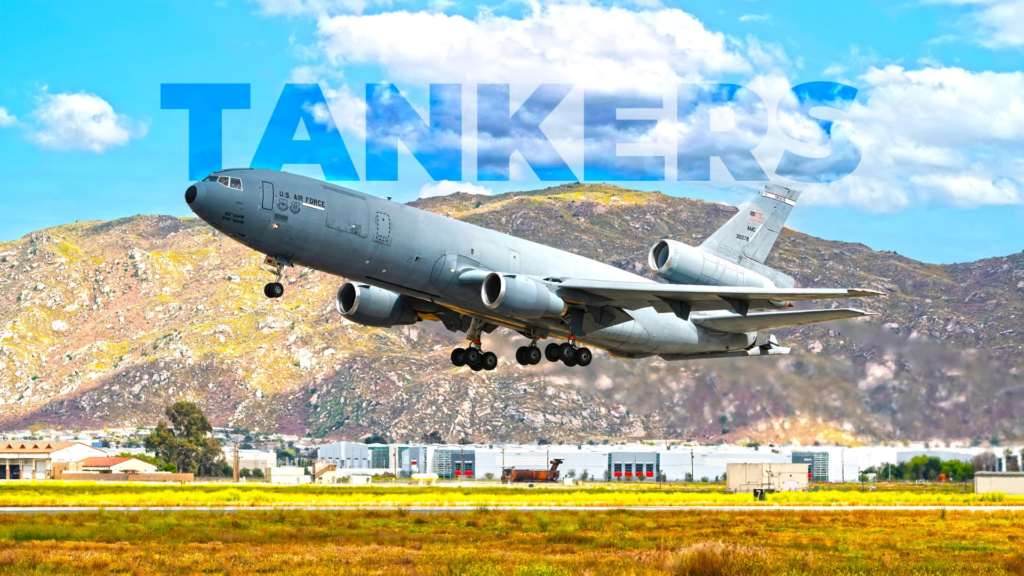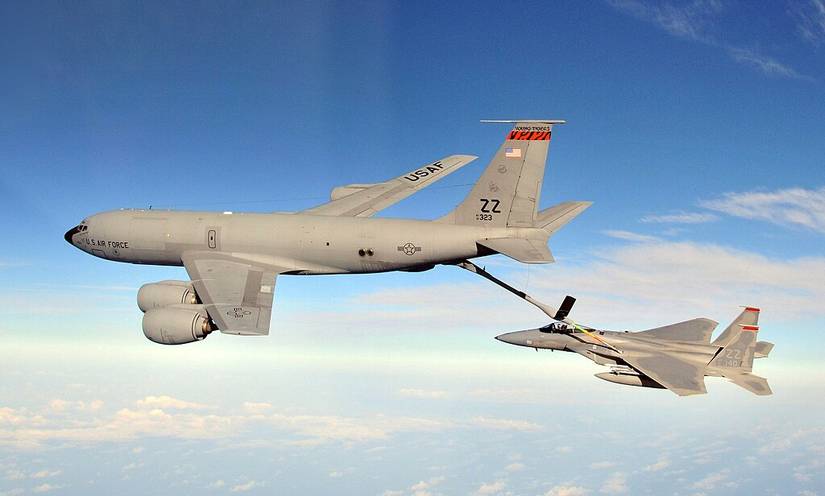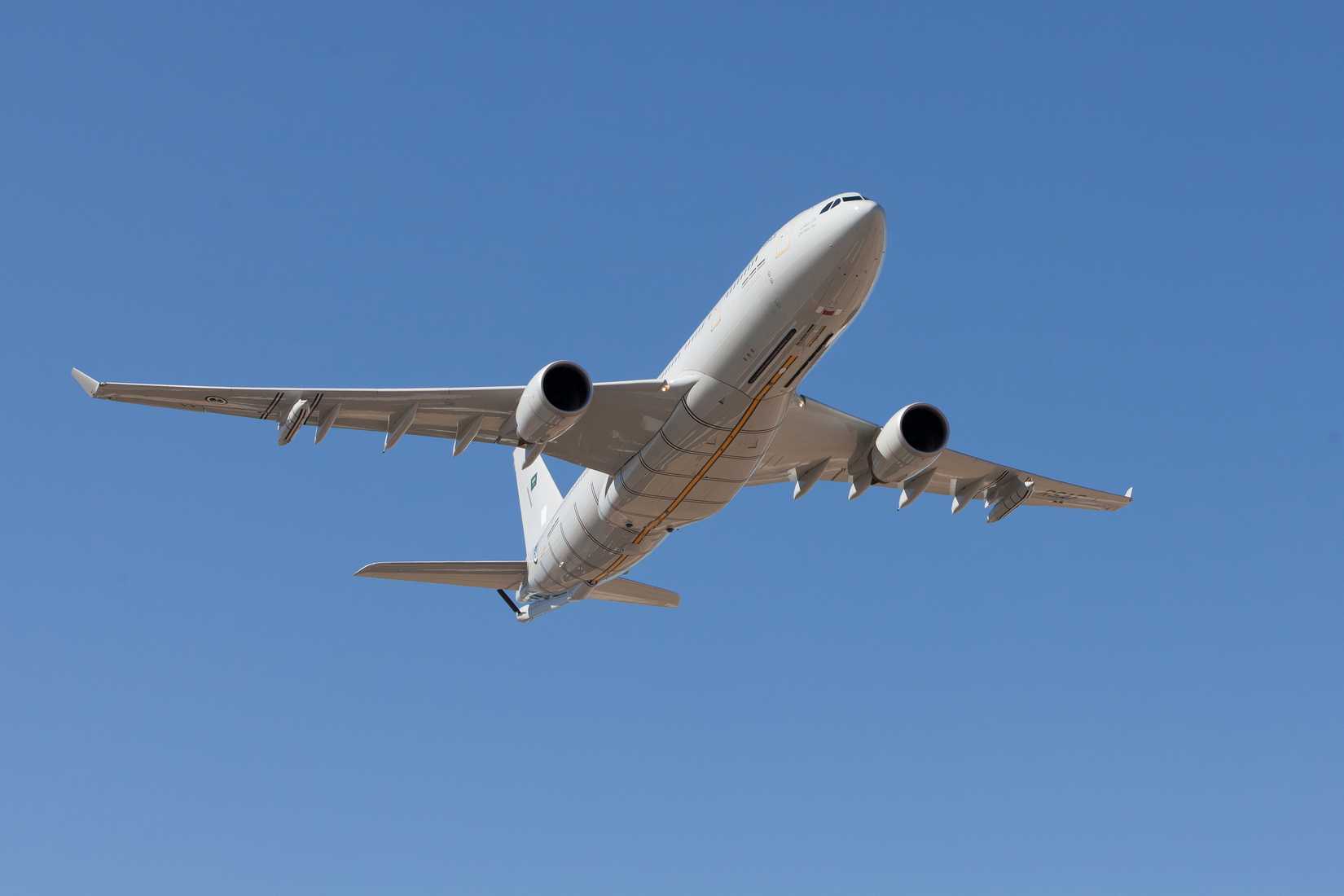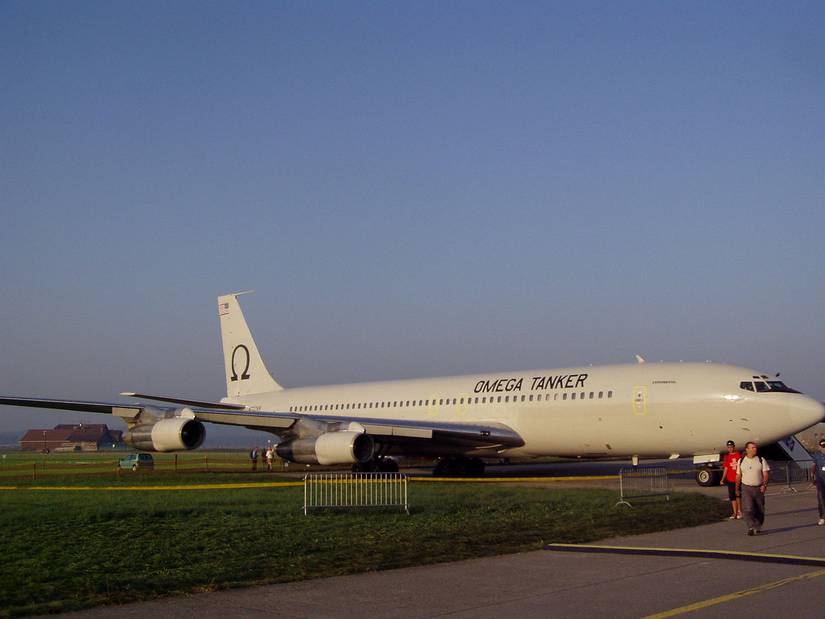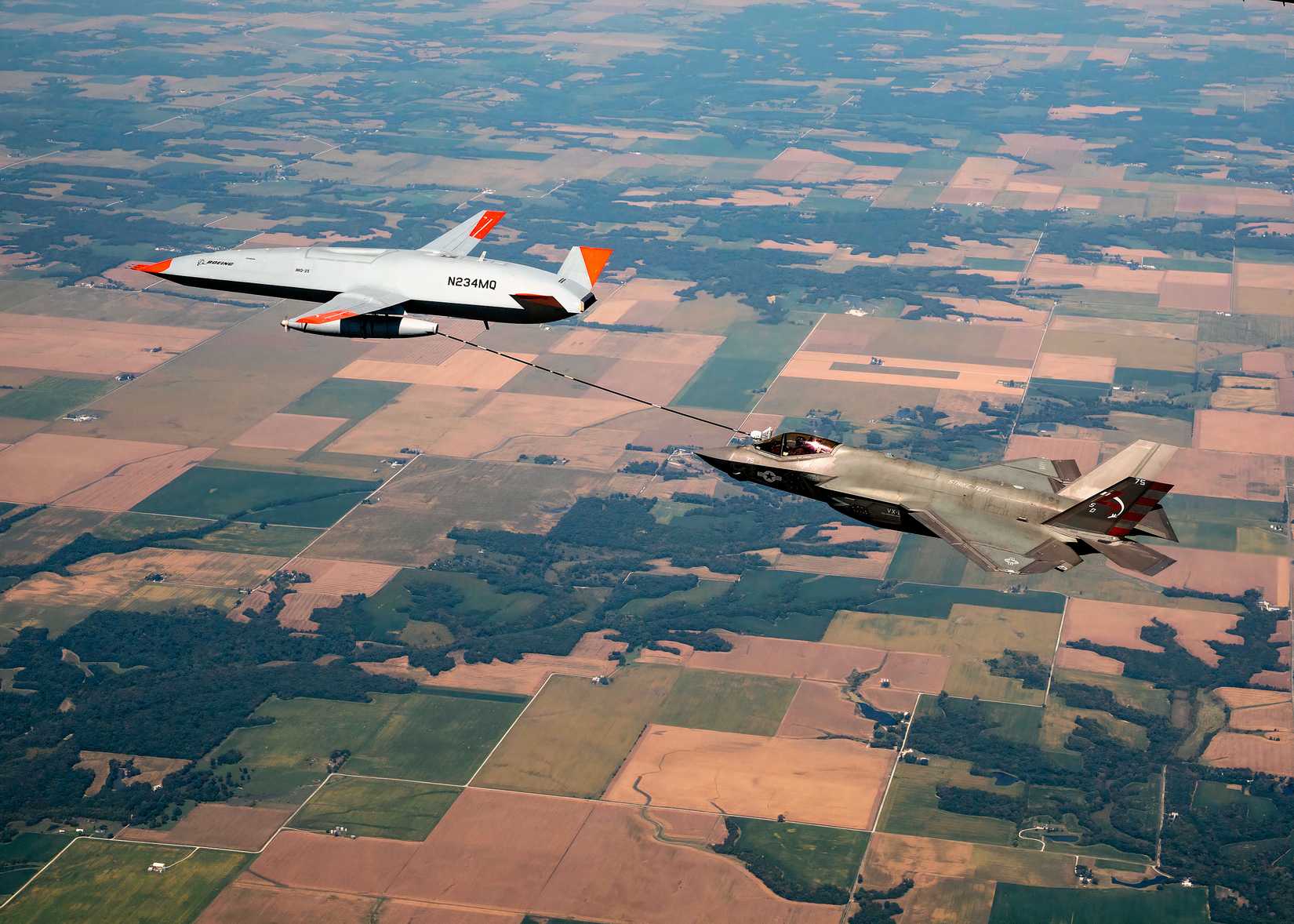Air‑to‑air refueling is one of the least glamorous yet most decisive capabilities in modern airpower. Tanker aircraft extend the range of fighters, bombers, and transports, allowing nations to project force far beyond their borders. Without them, even the most advanced combat jets would be tethered to their home bases. In this guide, we’ll explore the world’s largest air forces ranked by the number of aerial refueling tankers they operate, and why this capability matters so much.
Let’s explore which countries operate the largest tanker fleets, how new designs like the KC-390 Millennium and A330 MRTT are redefining the role, and why even private contractors such as Omega and L3Harris now play vital roles in keeping jets airborne worldwide.
Why Tankers Matter: The Hidden Backbone Of Global Airpower
Aerial refueling extends the range and endurance of aircraft that would otherwise be bound by their fuel tanks. A Boeing KC-46A Pegasus can transfer up to 121 tons (110 tonnes) of fuel midair, enough to refill several fighters or sustain a bomber halfway around the globe.
There are three broad categories of tankers in service today:
- Strategic tankers (KC-135, KC-46A, A330 MRTT): large, long-range refuelers.
- Tactical tankers (KC-130J, KC-390): rugged, short-field aircraft for front-line ops.
- Buddy-buddy systems: smaller jets like the Super Hornet, the Rafale, or the Tornado refueling each other via pods.
Beyond military operations, tankers often conduct medical evacuations, troop transport, or humanitarian aid. Following the 2023 earthquakes in Turkey and Syria, tankers from France, the UK, and Spain supported disaster response, including transporting firefighting teams, rescue personnel, and conducting medical evacuations. The aircraft’s large cargo capacity and long range let them reach affected regions quickly and deploy aid where it’s needed most.
The Biggest Tanker Fleet In The World: The United States
The United States maintains the largest aerial refueling force on Earth, over 600 active aircraft across the United States Air Force, US Navy, and US Marines Corps. At its core is the veteran KC-135 Stratotanker, a 1950s Boeing 707 derivative that continues to serve thanks to structural overhauls and digital cockpit upgrades. Roughly 400 remain in service, forming the bulk of the global refueling fleet.
Its successor, the KC-46A Pegasus, brings modern glass avionics, advanced data links, and enhanced survivability. The USAF plans for at least 180 aircraft by the early 2030s, replacing the long-range KC-10 Extender.
The US Navy and Marine Corps rely on the KC-130J Super Hercules and F/A-18E/F Super Hornet equipped with buddy pods, which are essential for carrier-based operations where larger tankers cannot operate.
|
Rank |
Country |
Tankers (2025) |
Key Types |
|---|---|---|---|
|
1 |
United States |
605 |
KC‑135, KC‑46, KC‑10, KC‑130 |
|
2 |
Saudi Arabia |
22 |
A330 MRTT, KC‑130 |
|
3 |
Russia |
19 |
Il‑78 Midas |
|
4 |
France |
16 |
C‑135FR (retired in June 2025 ), A330 MRTT |
|
5 |
Israel |
14 |
KC‑707, KC‑46 (on order) |
Source: www.globalfirepower.com
Together, these platforms give the United States unrivaled reach, from stealth bomber missions over the Pacific to NATO patrols over Europe.
Saudi Arabia And Europe: Rise Of The Airbus A330 MRTT
Saudi Arabia operates the second‑largest tanker fleet in the world, with 22 aircraft.This is remarkable given the kingdom’s relatively small population and geography. The Royal Saudi Air Force (RSAF) relies on a mix of A330 MRTTs (Multirole Tanker Transports), olderBoeing KE-3A and KC‑130s.Each aircraft can offload up to 122 tons (111 tonnes) of fuel while carrying 300 passengers or 49.6 tons (45 tonnes) of cargo, all while offering both boom and hose-and-drogue refueling.
Europe is actually a fascinating case when it comes to tanker fleets, as no single European nation comes close to the scale of the United States, but collectively, NATO Europe has built a surprisingly capable force.
France leads with around 16 aircraft, having recently fully transitioned from its aging KC‑135s to the modern Airbus A330 MRTT Phénix , while the United Kingdom operates nine A330 MRTT Voyagers, also based on the A330, under a unique public‑private partnership that we will discuss later.
Italy contributes eight Boeing KC‑767As, which have supported missions from Afghanistan to Libya, and Turkey maintains seven Boeing KC‑135Rs inherited from the United States.
Germany, meanwhile, retired its A310 MRTTs in 2022 and now contributes to the Multinational MRTT Fleet (MMF), a shared pool of nine A330 MRTTs jointly operated by Germany, the Netherlands, Belgium, Norway, Luxembourg, and the Czech Republic.
Taken together, Europe’s tanker strength amounts to roughly 50 to 55 aircraft, with the A330 MRTT emerging as one of the pillars of the continent’s refueling capability. Europe also fields the Airbus A400M Atlas, a powerful four-engine turboprop that combines cargo lift with aerial refueling. Fitted with under-wing hose-and-drogue pods and an optional fuselage refueling unit, the A400M can offload up to 40.8 tons (37 tonnes) of fuel while still carrying a payload of troops or vehicles.
It serves with France, Germany, Spain, the UK, and several export customers, providing vital support where larger tankers can’t operate, particularly on shorter or unpaved runways.
While no single European nation rivals the United States, the interoperability of these fleets under NATO gives Europe a flexible and modern refueling network that supports both regional defense and global operations.
Global Expansion: Russia, China, India, And Brazil
Russia maintains the third‑largest tanker fleet, with 19 aircraft. The backbone of this force is the IlyushinIl‑78 Midas, a Soviet‑era design derived from the Ilyushin Il-76transport, that remains essential for Tupolev Tu-160 and Tu-95 bomber missions.
The new Il-78M-90A variant offers glass cockpits and improved D-30KP-2 engines, although production is hindered bysanctions and industrial bottlenecks. This has left Russia with limited tanker capacity compared to its large combat fleet.
China, by contrast, is rapidly closing that gap. The People’s Liberation Army Air Force (PLAAF) is fielding the Y-20U, a refueling variant of the Y-20 Kunpeng strategic transport, as its first indigenous tanker program. The Y-20U uses under-wing hose-and-drogue pods to refuel fighters like the Shenyang J-16 and Chengdu J-20 stealth aircraft, while modified H-6U bombers continue to serve in secondary tanker roles.
Analysts estimate China will operate 30–40 Y-20Us by the early 2030s, enabling sustained operations deep into the Pacific and over the South China Sea, a crucial enabler for Beijing’s growing expeditionary reach.
India’s tanker fleet remains small but strategically vital. Its six Il-78MKI aircraft, acquired in the early 2000s, support both Su-30MKI and Mirage 2000 missions, yet the fleet has suffered from chronic maintenance and availability issues.
The Indian Air Force has twice tendered replacements, evaluating the Airbus A330 MRTT and Boeing KC-46A. A new competition, expected to conclude before 2026, could finally introduce a modern, more reliable tanker platform.
|
Country |
Fleet |
Key Aircraft |
Notes |
|---|---|---|---|
|
Russia |
~19 |
Il-78 / M-90A |
Modernization underway |
|
China |
15+ |
Y-20U, H-6U |
Rapid expansion |
|
India |
6 |
Il-78MKI |
Replacement planned |
|
Brazil |
8 |
KC-390 Millennium |
Versatile multirole design |
In South America, Brazil’s Embraer KC-390 Millennium has emerged as a standout design. Combining tanker, cargo, and medevac roles, it can offload 23 tonnes (25.3 tons) of fuel from austere runways. Portugal, Hungary, and the Czech Republic are also joining the Embraer KC-390 Millennium user group.
Private And Tactical Refueling: Omega, L3Harris, And Buddy Systems
Not every air force owns enough tankers to meet its operational needs. Budget limits, training demands, and deployment surges often outstrip the number of available aircraft. That’s where private aerial refueling companies and tactical “buddy-buddy” systems come in, an increasingly important layer in the global refueling network. Omega Aerial Refueling Services was the first private company to offer inflight refueling to militaries, starting in 1999. Based in San Antonio, Texas, Omega operates a small but versatile fleet of converted Boeing 707s and McDonnell Douglas KDC-10s equipped with hose-and-drogue systems.
The company routinely supports the US Navy, Royal Air Force, and Royal Australian Air Force during large-scale training exercises, carrier qualification flights, and transoceanic deployments. By contracting Omega, military forces free up their KC-135s, KC-10s, and A330 MRTTs for operational or combat missions. Omega’s aircraft can refuel both fighters and patrol aircraft simultaneously, transferring up to 80 tonnes (88 tons) of fuel in a single sortie. The company also operates globally, from Hawaii and Guam to the Mediterranean, effectively functioning as a “surge reserve” for Western air forces.
Another major player is L3Harris Airborne Systems, which provides contract refueling and testing services using modified KC-135R and A330 MRTT aircraft. L3Harris supports the US Air Force, NATO, and several allied customers, helping bridge gaps during fleet transitions or maintenance downtime.
In the UK, AirTanker Ltd operates a dual-use model unique in the world. The company owns 14 Airbus A330 Voyager aircraft, nine of which are operated full-time with the Royal Air Force, while the remainder operate as civilian charter jets when not required for defense tasks. This flexible arrangement ensures the UK maintains a strategic tanker fleet without bearing full-time operational costs.
Alongside large tanker jets, tactical aircraft refueling each other midair remains a vital capability, particularly for carrier air wings and smaller air forces. Known as “buddy-buddy refueling,” this method uses external pods, often produced by Cobham Mission Systems, that allow one fighter to transfer fuel through a hose-and-drogue system to another. While the fuel capacity is far smaller than a dedicated tanker, the flexibility is priceless.
The US Navy’s F/A-18E/F Super Hornet is routinely used in this role, carrying a buddy pod and centerline fuel tanks to support carrier operations. Similarly, Dassault Rafale and Saab JAS 39 Gripen jets in European and export service can perform the same function, extending mission range during deployments or maritime patrols.
These systems typically transfer between 1 and 2 tonnes (1.1–2.2 tons) of fuel, enough to “top up” a fighter before combat or extend its range for recovery. They’re particularly valuable when no large tanker can operate nearby, such as during carrier operations in contested airspace. As air forces adopt more dispersed and agile-based concepts, buddy refueling is becoming relevant again. In the Indo-Pacific, for instance, it allows fighters to operate from remote island bases without relying on vulnerable large tankers.
The Future: Automation, Drones, And The Next Tanker Era
The next frontier in aerial refueling will be autonomous systems. The Boeing MQ-25 Stingray, the world’s first operational aerial refueling drone, has successfully refueled F/A-18s, F-35 and E-2Ds during US Navy tests. This unmanned system will extend the range of the carrier air wings by hundreds of miles. Airbus, meanwhile, has tested fully automated boom refueling on an A310 MRTT prototype, using sensors and AI to complete connections without human input.
By the 2030s, mixed fleets of manned and unmanned refuelers could dominate both NATO and Indo-Pacific operations, pairing efficiency with survivability.
For now, the global tanker community, from legacy KC-135s to brand-new KC-390s, remains the invisible engine of global reach. Without them, the skies would shrink dramatically.


